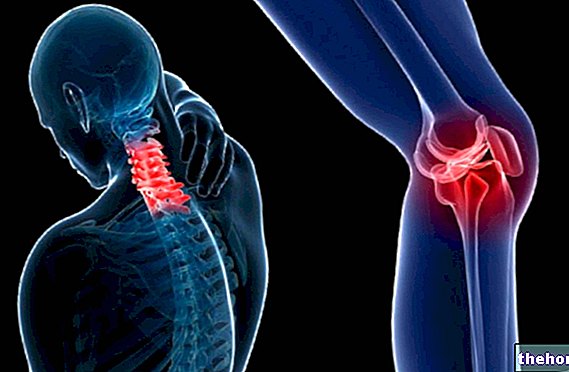The electrocardiogram (ECG) is the graphic recording of the electrical currents of the heart, through leads called standard D1-D2-D3, unipolar AVR-AVL-AVF and precordial leads from VI to V6.
We will consider arrhythmias, atrio-ventricular and intraventricular conduction disturbances in the field of electrocardiographically detectable disorders.
Arrhythmia means a rhythm disturbance due to impaired excitability or conduction of the cardiac stimulus; they can be classified into hypokinetic arrhythmias and hyperkinetic arrhythmias (or tachyarrhythmias).
Hypokinetic arrhythmias
Sinus bradycardia is a slowing of the normal heart rate, below 50 beats / min. The assessment of a bradycardia must take into account the training conditions of the subject in sports; in fact, in a trained subject a very low heart rate (f.c.) at rest (e.g. 35 beats / min) has no pathological significance.
If the resting heart rate is less than 30 beats / min, the HR will be studied. under stress, with the execution of an ergometric test and a dynamic ECG (ECG-Holter) during a training session.
A sino-atrial block, which occurs when the stimulus formed in the sinus node is not transmitted regularly to the atria, is not a contraindication for sports if it disappears after the stress test.
Atrioventricular blocks (A-V) are disturbances in the conduction of the stimulus from the atria to the ventricles; of a functional or organic nature, they can be located at different levels of the conduction pathways and be of different degrees.
In Grade I A-V block there is a delay in A-V conduction, without interrupting the passage of the stimulus to the ventricles. The ECG shows a lengthening of the PR segment. The second degree A-V block consists in the periodic interruption of the passage of the stimulus from the atria to the ventricles; there are two main types: the Luciani-Wenckeback periods or Mobitz I type, and the Mobitz II type. Finally, in the A-V block of III degree there is complete interruption of the A-V conduction of the stimulus.
The vagal hypertonus, characteristic of sportsmen, is mostly accentuated by endurance training, and often favors the onset of hypokinetic arrhythmias.
In the case of Grade I and Mobitz type I A-V blocks, the disappearance of the disorder with exertion has a benign significance. In the remaining cases, subsequent tests are required, such as the dynamic ECG recorded for 24 h, including a training session.
Intraventricular conduction disturbances consist of a delay or interruption of the propagation of the stimulus at the level of the right or left branch. The delay can be incomplete or complete, depending on the amplitude of the QRS complex (less than or greater than 0.11 sec).
The incomplete right branch block does not in itself contraindicate sports activity; the complete right branch block and the left branch blocks with QRS less than 0.11 sec require the execution of further tests (maximal effort test, echocardiogram ). Complete blockage of the left branch contraindicates sporting activity.
Tachyarrhythmias (Hyperkinetic Arrhythmias)
Extrasystoles are anticipated beats that originate from an ectopic center, which can be atrioventricular, junctional or ventricular. They can be caused by any type of heart disease, appear following some drug therapies, be secondary to the abuse of coffee and tobacco; often there is no specific cause in determining their onset. Generally they do not cause subjective disturbances, at most it can be feel a sense of palpitation.
In atrioventricular reciprocating tachycardia (TRAV) the reentry circuit involves the AV node and / or one or more accessory pathways.
In junctional reciprocating tachycardia, the reentry circuit is located in and around the intra and periodal AV node.
Paroxysmal atrial fibrillation can arise on its own or as a complication of a high-frequency reciprocating tachycardia.
The electrogenic mechanisms of onset and interruption of reciprocating tachycardias have been extensively studied and are most often easily reproducible in endocavitary and / or transesophageal electrophysiological study. A premature beat, more frequently supraventricular, due to the functional differences existing between the various sections of the reentry circuit (refractoriness, anterograde and retrograde conduction velocity, etc.), is blocked in one of the branches of the circuit (one-way block) and sufficiently delayed along the other branch to be found re-excitable in a retrograde direction the previously blocked path (re-entry phenomenon).
Heart rate (HR) during reciprocating tachycardia depends on:
- the dimensions of the re-entry circuit;
- the electrophysiological properties (refractoriness / conduction speed) of the tissues that make up the anatomical circuit;
- the level of adrenergic activation.
In some patients, tachycardia may arise spontaneously or be inducible only under exertion. The differential diagnosis between the two types of tachycardia, atrio-ventricular from an abnormal and junctional route, is most often possible with the aid of an electrocardiographic recording. intraesophageal, based on the duration of the ventriculo-atrial interval during tachycardia. With the same method it is most often possible to distinguish, in the presence of QRS aberrance, an orthodromic reciprocating tachycardia with frequency-dependent branch block (the pulse goes down along the normal atrio-ventricular pathway and goes up along the anomalous path), from an antidromic tachycardia (the impulse descends along the anomalous path and goes up again along the normal atrio-ventricular path): in this second case the AV interval is shorter than the VN. "
In the course of sustained atrial fibrillation it is possible to observe beats with different degrees of VEP. In this condition, it is of particular importance to quantize the percentage of pre-excited beats, the minimum R-R interval and the average R-R interval between two pre-excited beats, parameters considered significant for determining the risk of secondary ventricular desynchronization.
However, it should be emphasized that the arrhythmic event in the subject with VP is the result of multiple causal factors that cannot always be quantified, varying according to the prevalence of sympathetic or parasympathetic neurovegetative effects in a heart which is otherwise healthy. , although there are reported cases in which the onset of paroxysmal tachyarrhythmias is certainly correlated to physical effort, the real arrhythmogenicity of the same in athletes with VP is still controversial. It must be borne in mind that athletic conditioning modifies the autonomic tone to varying degrees depending on the type and degree of training, and that in the "official competitive commitment, especially in extreme conditions, additional elements come into play, such as above all psychological stress," entity of which can vary significantly from individual to individual depending on the personality characteristics. The prevalence of adrenergic effects can be a risk factor in sustained atrial fibrillation in an athlete with documented hypersensitivity of the abnormal pathway to catecholamines, while it can facilitate preferential conduction in the AV node in other subjects. In this regard, numerous studies have now shown that in subjects with VP the risk of ventricular fibrillation and sudden death is greater when documenting:
- a history of spontaneous atrial fibrillation and / or high rate reciprocating tachycardia;
- the presence of multiple anomalous pathways;
- a minimum pre-excited R-R interval during atrial fibrillation <250 msec at rest (<210 msec under exertion).
The prognostic value to be given to the duration of the antegrade refractory period of the anomalous pathway is still controversial, especially if evaluated indirectly. In fact, while values lower than 270 msec at rest are considered a risk factor, "the finding of values higher than 270 msec does not exclude with certainty the risk of fatal arrhythmic complications, as transient and unpredictable changes in refractoriness are possible, sometimes associated with supernormal conduction (in practice faster than the usual one) in the accessory pathways. In light of this, a dynamic evaluation of the electrophysiological parameters is therefore advisable by means of transesophageal electrophysiological study repeated in several sessions. The reproducibility of the recently validated method is certainly adequate where the technique is used appropriately.
The extrasystoles that disappear during and after exertion are considered to have no pathological character; vice versa when they persist or increase after exertion, or present with some characteristics (repetitiveness, high frequency, polymorphism in the case of ventricular extrasystoles), a diagnostic study is necessary to exclude a pathological cause in their determinism.
Hyperkinetic arrhythmias are flutter and atrial fibrillation, paroxysmal supraventricular tachycardia, ventricular tachycardia, more complex forms of various etiology that always require in-depth cardiological investigations, in some cases up to the electrophysiological study (recording of the activity of the conduction system , especially in the His bundle, by introducing particular electrodes into the heart cavities).
Curated by: Lorenzo Boscariol
Other articles on "Electrocardiographic abnormalities"
- cardiovascular pathologies 4
- cardiovascular system
- athlete's heart
- cardiological examinations
- cardiovascular pathologies
- cardiovascular pathologies 2
- cardiovascular pathologies 3
- electrocardiographic abnormalities 2
- electrocardiographic abnormalities 3
- ischemic heart disease
- screening of the elderly
- competitive fitness
- cardiovascular sports commitment
- cardiovascular commitment sport 2 and BIBLIOGRAPHY




























